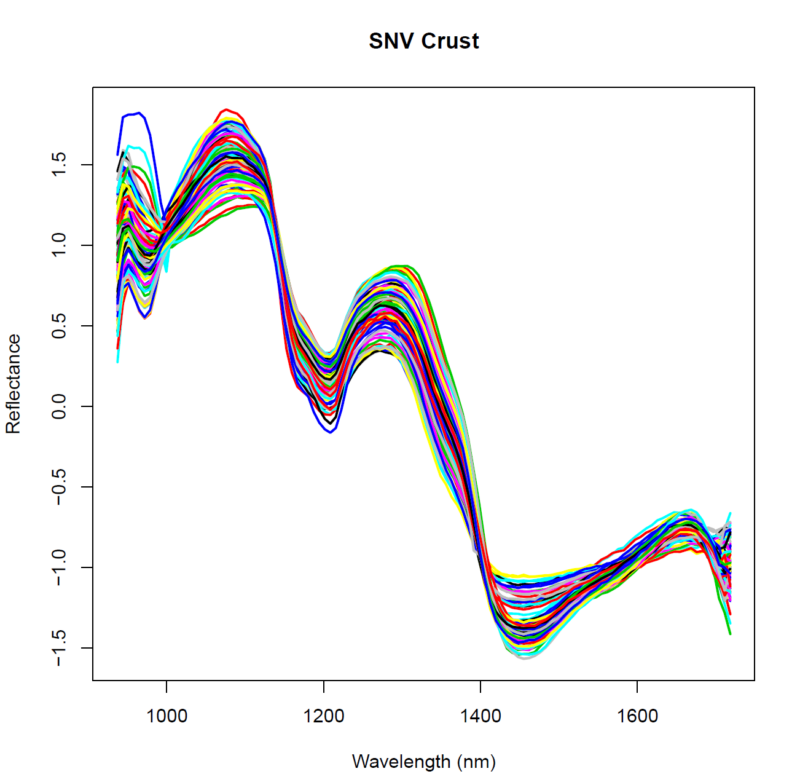Predicting frying times in recently fried potato fries using imaging spectroscopy and Partial Least Squares Discriminant Analysis (PLSDA)

Sensor Fint Conference. Berlin, Germany. ·
Samples were distributed in two classes according to the frying time Class 1 (3 minutes) and Class 2 (5 minutes). Both data sets were divided into calibration (70%) and validation (30%) sets, randomly. Besides raw data, several preprocessing steps were performed: Standard Normal Variate (SNV), First and Second Derivative, Detrending, and combinations of those. PLSDA models were built in the training set using 11 to 40 selected variables by CovSel, with raw data and all of the above mentioned pretreated data sets. The number of latent variables were optimized as well, by 5-fold cross validation. Figure 1 shows results of different models and the pretreatments used. In all of them the optimal number of variables was also optimized.
Both data sets were also analyzed with raw data, using the entire spectral range by 5-fold cross-validation. The best models were achieved using Subspace Discriminant and Linear Discriminant (with PCA) on Core and Crust, respectively.
The model presented high accuracy of validation, 91.1% and 90.5% for core and crust, respectively. Sensitivity and specificity , were 0.93 and 0.96 respectively for class 1 in the core model, and 0.86 and 0.93, respectively in the crust model.
Both data sets were divided into calibration (70%) and validation (30%) sets, randomly. Besides raw data, several preprocessing steps were performed: Standard Normal Variate (SNV), First and Second Derivative, Detrending, and combinations of those. PLSDA models were built in the training set using 11 to 40 selected variables by CovSel, with raw data and all of the above mentioned pretreated data sets. The number of latent variables were optimized as well, by 5-fold cross validation. Figure 1 shows results of different models and the pretreatments used. In all of them the optimal number of variables was also optimized.
M. Bertotto1 , E. Hogeveen1, T. Verkleij1, R. Hamoen1, G. Polder1
1Wageningen University and Research, Wageningen, Netherlands
